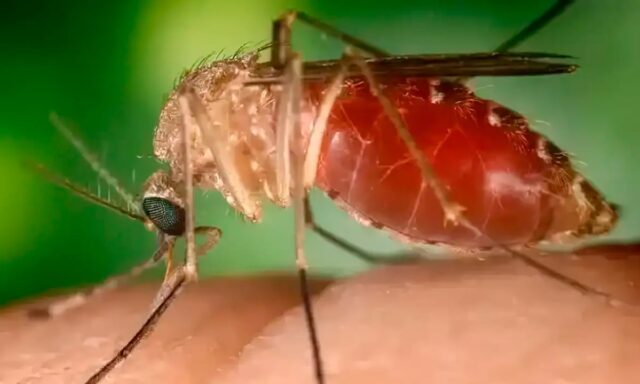Research led by the Oswaldo Cruz Foundation (Fiocruz) pointed out that the beginning of the outbreak of febre Oropouche in 2024 it was caused by a new viral strain that emerged in the Amazon region. The results of the study are contained in a peer-reviewed article accepted in the international scientific journal Nature Medicine. The preliminary version was already released last week to ensure early sharing of findings, but the text will still undergo further revisions before definitive release.
The sudden increase in transmission of the disease in the first two months of 2024 generated an epidemiological alert in the Amazonas. Concerns grew with the progression of incidents, which reached all regions of the country. But data from previous years had already been monitored more closely by health authorities.
Between August 2022 and February 2024, more than 6 thousand occurrences of Oropouche fever were recorded in around 140 municipalities in the Northern Region. Fiocruz’s research involved sequencing the genome of viruses referring to 382 cases registered in four states: Amazonas, Acre, Rondônia and Roraima. The analyzes revealed that the infections were caused by the new lineage of the virus that causes the disease, identified as OROV BR-2015-2024.
Considering the genetic characteristics of the pathogen, the researchers estimate that its emergence probably occurred between 2010 and 2014 in the state of Amazonas. The new lineage would be the result of a genetic rearrangement between strains circulating in Brazil and another circulating in Peru, Colombia and Ecuador. Since then, it would have spread silently until causing the recent epidemic.
Genetic rearrangements, such as the one that gave rise to OROV BR-2015-2024, occur when the same person or animal is simultaneously infected by two different viral lineages. Thus, in the process of viral replication, a strain may emerge that combines elements of both pathogens.
According to a note released this Friday 27th by Fiocruz, the researchers concluded that OROV BR-2015-2024 presents changes on the surface of the viral particle that can facilitate the escape of antibodies.
“People previously infected with the Oropouche virus may have reduced protection against the new strain. Furthermore, a preliminary study, carried out by another group of scientists, and not yet peer-reviewed, indicates that the new strain replicates more quickly in cells than the first lineage of the virus. Oropouche isolated in Brazil, in the 1960s″, records the text.
Oropouche fever is a disease caused by an arbovirus. There is no specific treatment, but the patient must remain at rest and receive medical supervision. Common analgesics and antipyretics may be prescribed to alleviate symptoms, which are very similar to those of dengue. They generally last between 2 and 7 days and include fever, headache, back and joint pain, dizziness, pain behind the eyes, rashes, nausea and vomiting may also occur. In some cases, encephalitis also occurs.
Transmission, however, does not occur through the bite of Aedes aegypti, but rather through other mosquitoes, especially through Culicoides paraensisknown as maruim or sandfly. They proliferate mainly during periods of heat in humid environments, such as in areas close to mangroves, lakes, swamps and rivers. But they are not restricted to rural areas, being present in urban spaces with availability of water and organic matter, especially close to vegetable gardens, gardens and trees. THE A five-sided mosquitoone of the species popularly called mosquito, can also eventually act as a vector.
In Brazil, sporadic outbreaks of the disease have been recorded in the Amazon region since the 1970s. During the recent spread, cases of the disease were recorded in all regions of the country. Although a portion of them are imported incidents, involving travelers who returned from the Amazon region, different states have also detected locally transmitted infections.
In July of that year, the first deaths from the disease ever to occur in the world were recorded in Bahia. The situation has raised concerns from national and international health bodies.
Climate change
Researchers warn that outbreaks and epidemics often arise from a combination of factors and raise the possibility that the recent spread of Oropouche fever was influenced by climate changewhich have been generating extreme events in the Amazon. Along with deforestation and environmental degradation, these changes in climate could affect the behavior of the mosquito vector, contributing to greater exposure of the population. This hypothesis would help explain why the new strain circulated for almost 10 years before causing a large outbreak.
The study also confirmed the seasonal pattern of Oropouche fever. High spread of the virus was observed in the rainy seasons and low, although persistent, transmission in the dry seasons. This dynamic would be associated with greater proliferation of the vector during the rainy season.
The researchers also concluded that the spread of the disease occurred through a combination of movement of vectors and infected humans. “In around two-thirds of cases, the spread of the virus was compatible with the insects’ flight range, remaining below 2 km per day. However, in approximately one third of the records, a dispersion of more than 10 km per day was observed, indicating an association with human displacement”, records the Fiocruz press release.
The study mobilized Fiocruz units based in five states: Rio de Janeiro, Amazonas, Rondônia, Pernambuco and Paraná. The work also included the cooperation of units from the Central Public Health Laboratories (Lacens), which are integrated into the Unified Health System (SUS) and are managed by state governments. There was also involvement of other public bodies and scientific institutions.






